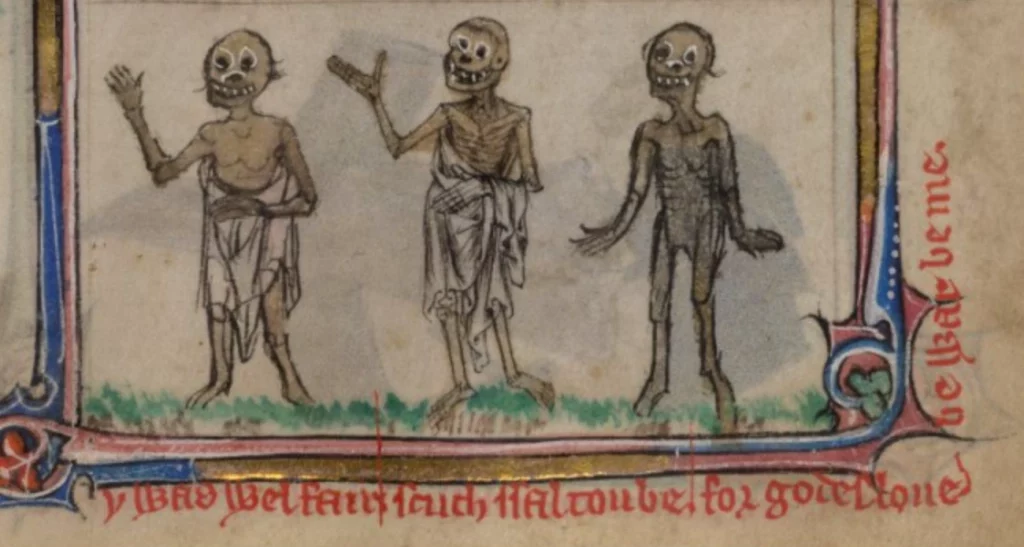New historical drama alert! Early March will see the mini-series Mary and George find our screens and it looks like it’s going to be dramatic. For a start, it’s produced by Starz so we can expect a liberal disregard for history in favour of ridiculous and way over the top drama. The story follows George Villiers, lover and especial favourite of King James I of England (VI of Scotland) and, unsurprisingly, his mother, Mary. Together, the two form the titular Mary and George and the show charts George’s rise to power as James’ lover as a result of Mary’s machinations.
But there is more to this drama than just a queer romance playing out against the backdrop of the Stuart court. The series is based on Benjamin Woolley’s book The King’s Assassin: The Fatal Affair of George Villiers and James I in which [Spoiler Alert] their affair takes a fatal turn. Woolley makes a convincing and persuasive argument that James I was poisoned by George, backed up by input from one of the world’s leading toxicologists who likes to investigate historical events from a medical perspective in his spare time. Between them, they determine the poison used to murder James and how it was accomplished. For motive, Woolley refers to the large body of evidence he presents in the book and it is an impressive body.
I have already written in some detail about the sexuality of King James I and don’t want to repeat myself on many of the details. But this is a far more in depth look at James’ relationship with his final favourite, George Villiers, the people that surrounded them, and of course, whether or not George was involved in the potential murder of his lover.
The Titular Mary
Born in 1570, Mary Beaumont was an ambitious, intelligent, and beautiful woman who had the misfortune of being born to a family that put her on the outer outskirts of the gentry. Though she was descended from a noble family that could trace their origins in England to William the Conqueror, she had little else to recommend her as a potential bride. Mary determined from a young age that she should live among the upper classes of society and fortunately for her, she had the smarts to elevate her.
In her late-teens she made her first marriage to her recently widowed cousin, Sir George Villiers. He was twice Mary’s age but enamoured with her beauty and most importantly, on the rise. They went on to have five children; Samuel, John, Susan, George, and Christopher. Samuel died in infancy and George was afflicted with a near fatal illness. He survived and was forever more his mother’s favourite child.
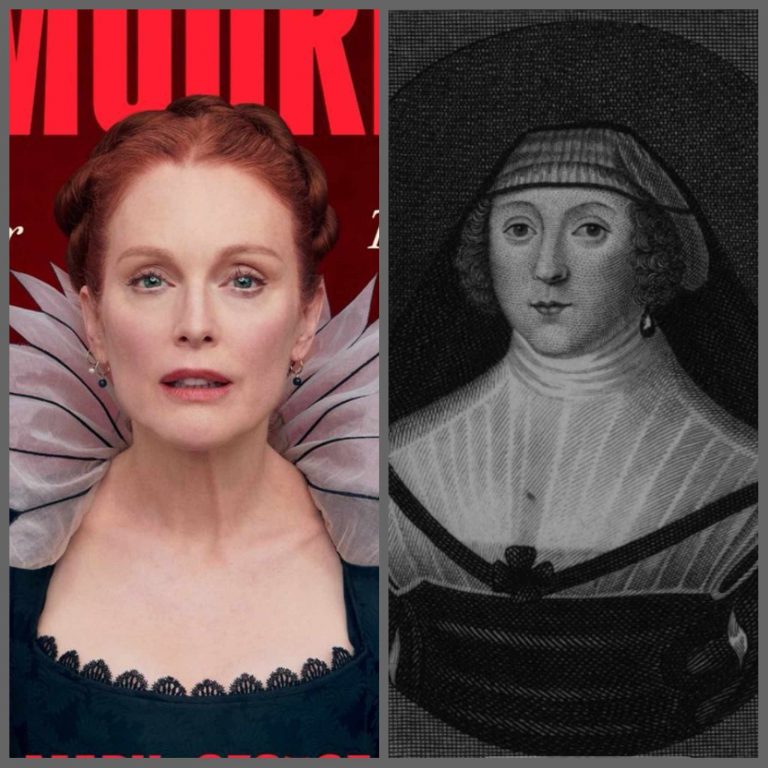
Knowing King James I’s proclivity for young, attractive men, Mary identified that George had the potential to rise high as a courtier from an early age. This wasn’t pure favouritism on her part. Her eldest son John would develop severe mental problems that would eventually lead to insanity, while her youngest was described as ‘unintelligent and unattractive’ and would go onto live up to these expectations in spades.
In George, however, she saw all the qualities that, if nurtured, would allow him to elevate his station which would in turn help the family. To that end, she dispatched George to a tutor worthy of the upper nobility. Everything would have been fine had George Villiers the elder not rather suddenly and inconveniently dropped dead in January 1606.
The Titular George
The death of his father would have been a great loss to the fourteen year old George at a time when he was transitioning from boy to man. I don’t mean that in a nebulous growing up sense, I mean in the quite literal sense that the society of the time viewed the early teen years as the entry to adult manhood. It didn’t help that Mary Villiers and her children were now left completely destitute.
George was the second of his parents sons but even his brother wasn’t the heir. George Villiers Sr. had had five children with his first wife and George’s half brothers had little interest in sharing the family estate with Mary. Incidentally, his half-siblings had no such scruples with associating themselves with their father’s second family during George’s ascendency at court. Imagine that.
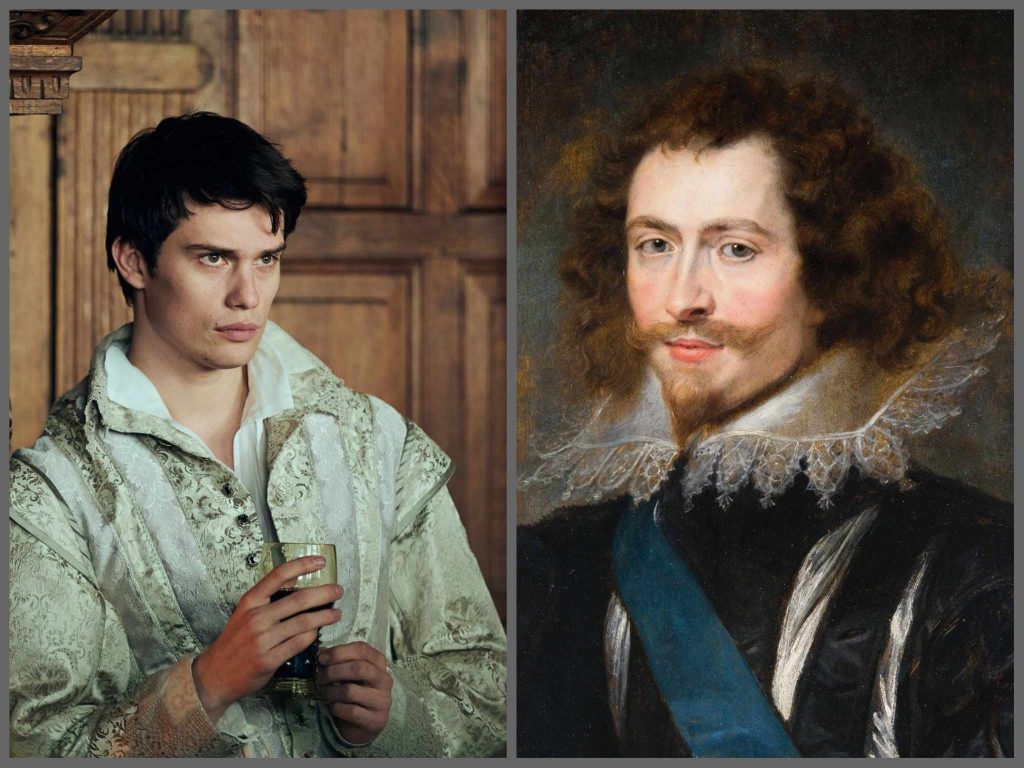
Mary was still banking on George to turn things around. But in order to do that, she needed to continue his courtly education. In order to do that, she needed money. In order to gain that, she needed a husband. Once again, she used her looks and relatively swiftly she married another widower; the aged Sir William Rayner.
Very quickly into the marriage, it soon became clear to Mary that Rayner had been the wrong choice. He had the money to elevate his new wife but lacked the inclination. He was in his late eighties and his health was failing. But Mary had plans for her new husband’s estate regardless of his wishes. In October, nine months after losing her first husband, her second husband took to his bed in extremis. Mary took the opportunity to rob his estate which ended badly when one of her husband’s friends caught her and reported back. Sir William was unimpressed, to say the least, and hastily rewrote his will to exclude Mary and leave everything to his daughter by his first wife. He died shortly afterwards, leaving Mary no better than she had been before she’d married him. In fact, she was worse off seeing as Sir William’s daughter decided to prosecute Mary for her crimes and she had the connections to make it stick. Despite fighting the subsequent legal battle, within a year Mary had married again and this time it was going to work.
Her choice of husband was Sir Thomas Compton, an extremely wealthy merchant whose brother was a rising star at court. With fortunes restored and having heard from George’s tutors that he was not particularly academically inclined, Mary dispatched George to France. With his not-yet-insane brother John as companion and chaperone the two made for the continent.
For three years they… Well, we don’t actually know what they did. They completely dropped off the radar for their entire stay driving their mother to consult with astrologers to determine whether they were alive or dead. To her relief, they returned three years later and George had become everything his mother wanted. Naturally, he had learned French, the most courtly of languages. He could dance, fence, and in general had acquired the skills he needed to make an impression. It also helped that by all accounts he was absolutely gorgeous. Mary took it upon herself to sand the rough edges and with a bit of polish, George was soon ready to make his courtly debut.
The Prize: King James I
James I of England had become king of the country at the age of thirty-seven but he had been King James VI of Scotland since he had been thirteen months old. His mother had been forced to abdicate for her potential role in murdering James’ father which left the infant king without family and a country to govern. This would, unsurprisingly, have a massive impact on James. He would spend most of his adult reign with a male favourite/lover at his side. He didn’t neglect his duty to the realm; he married and had children but the court was very much dominated by the promotion of his lover.
In 1614 when George first arrived at court, James’ favourite was Robert Carr, who George was about to go head to head with for a place in the king’s bed. It took George a year to work his way up from one of the low-ranking hangers on who flocked to the outer chambers of the court, hoping that someone might notice them. George was attractive and accomplished enough to capture that attention from the faction who wanted to oust Carr and plans were made to introduce him to the king.
Demonstrating the kind of drama that would characterise his life, George immediately fell in love with a wealthy heiress and the two were quickly betrothed despite objections from her family. The marriage didn’t materialise despite the depth of feeling George and his potential bride had for each other but it certainly drew even more attention to him. Within a year of arriving at court, George was given his initial break – the opportunity to get up close and personal with the king as a cupbearer.
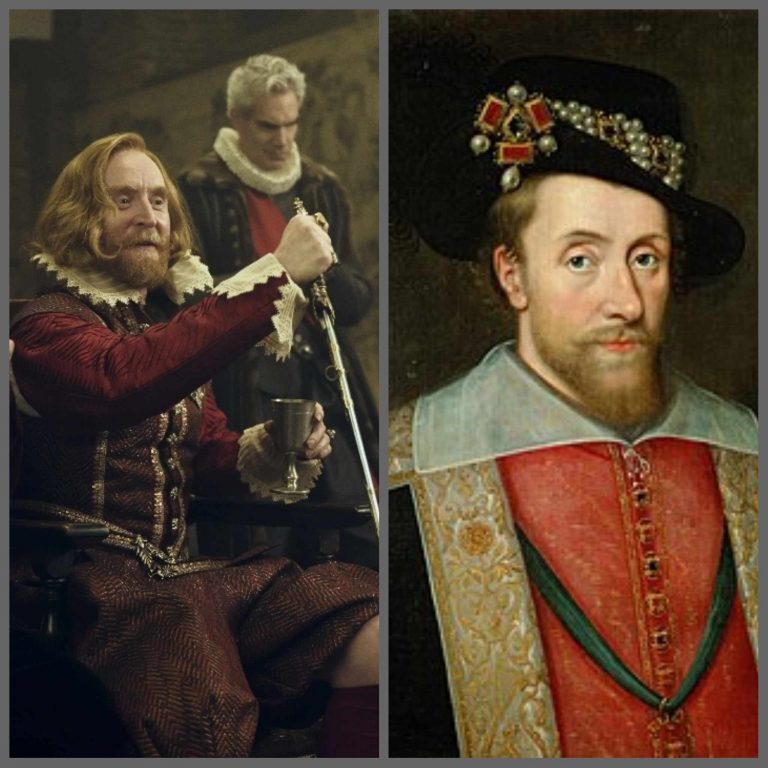
To his credit, Carr immediately recognised George as the threat he was. During that one evening, he tried to have George mutilated and banished for starting an altercation in the king’s presence. When the king refused to do so, Carr became sullen and withdrawn, forcing James to overlook George. James, however, had noticed him though he refused to grant him any initial honours for fear of Carr’s emotional withdrawal. George could afford to be patient however and by not pushing himself between James and Carr, he ensured that he remained a contender for the king’s interest without provoking the much more powerful Carr into open confrontation.
Another year passed and George was given a prominent part as a dancer in a masque performed for the king. James was entranced. He didn’t want to suffer his lover’s jealous rages again, so quietly he asked those of his innermost circle to bring George into said circle by inches. The idea was to introduce him so gradually into the king’s periphery that Carr didn’t notice and kick off. It helped that the queen absolutely hated Carr and was happy to support George’s bid to unseat him. With the queen on side, George was quickly knighted and made a gentleman of the bedchamber. George remained well clear of Carr and continued to discreetly rise, exactly as his mother had planned.
The House of Villiers
I have already written about Carr’s fall from grace. But to summarise: he was implicated in the poisoning of Thomas Overbury, who it turned out was also Carr’s lover. James was unimpressed and the situation only continued to escalate ultimately resulting in Carr’s move from James’ bed to the execution block. All of Carr’s enemies flocked to George who now seamlessly transitioned to the role of king’s favourite. Shortly afterwards, James paid a visit to George’s family home and met Mary for the first time. The year was 1618 and it was almost a year since the evening a jealous Carr had tried to have the king’s attractive cupbearer multilated. Two since Mary had first sent George to court and now the king was spending the night in her house.
But this visit to George’s family home was significant for another reason. While Mary impressed James with her maternal devotion, something which was easily done given how unfamiliar James was with mothers, George went from favourite to lover as they went to bed for the first time. The two of them would frequently remember their first night together as an evening of incredible intimacy both physical and emotional. For a touch-starved James who had been suffering from Carr’s emotional withdrawal the experience was particularly overwhelming.
George now experienced a meteoric rise at breakneck speed. He was showered with gifts, offices, and position. He was made Master of Horse, invested with the Order of the Garter, created Viscount Villiers, then Earl of Buckingham, Lord Lieutenant of Buckinghamshire, the list went on. He was the youngest ever member of the Privy Council in England, the first Englishman to be appointed to the Scottish Privy Council, and he was employed as the Prince of Wales’ dance tutor. In a matter of years he was the most powerful non-royal at court.
Naturally, his family benefitted from his rise, even his half-siblings who had previously treated them poorly. Mary, naturally, came into her own as her son fulfilled every ambition she’d had for him. The king loved her and enjoyed her company at court, sometimes more than her son did. She attracted a large following even though she was a deeply unpopular woman. As well as the usual backlash experienced by those who benefitted from the king’s favour from those who did not, her ambition was considered relentless and her manners too crass for a refined court.
But Mary was still working for her son’s benefit. Over the years George gained incredible wealth but with no children, his brother John was the heir to the ever-increasing Villiers fortune. Mary masterminded, with some drama, a marriage between John and Frances Coke. However, shortly afterwards John completely lost his reason. Within two years of marrying him, Frances left him for her long-term lover and soon after she bore her lover’s children with her husband’s name. If George should die without issue, his heirs would be the bastard children of his brother’s wife. Mary therefore masterminded another marriage, this one for George in order to secure the family legacy.
The choice of bride had fallen on Katherine Manners though whether she was George’s choice or his mother’s is up for debate. She was the wealthiest woman in England beyond the royal family and the sole heiress to the estate of the Earl of Rutland – her father. She was a beautiful young woman and was singled out at court for being the only woman at court whose name had never been involved or linked with scandal. But that was about to change.
Rutland was not keen for the marriage to go ahead nor was the king. There were issues of religion, issues of finance, and issues of negotiation. The king himself denied permission for the marriage, in one of the exceptionally rare circumstances he denied his lover anything. This wasn’t because he wanted to keep George to himself but because he found Katherine’s religion unsuitable.
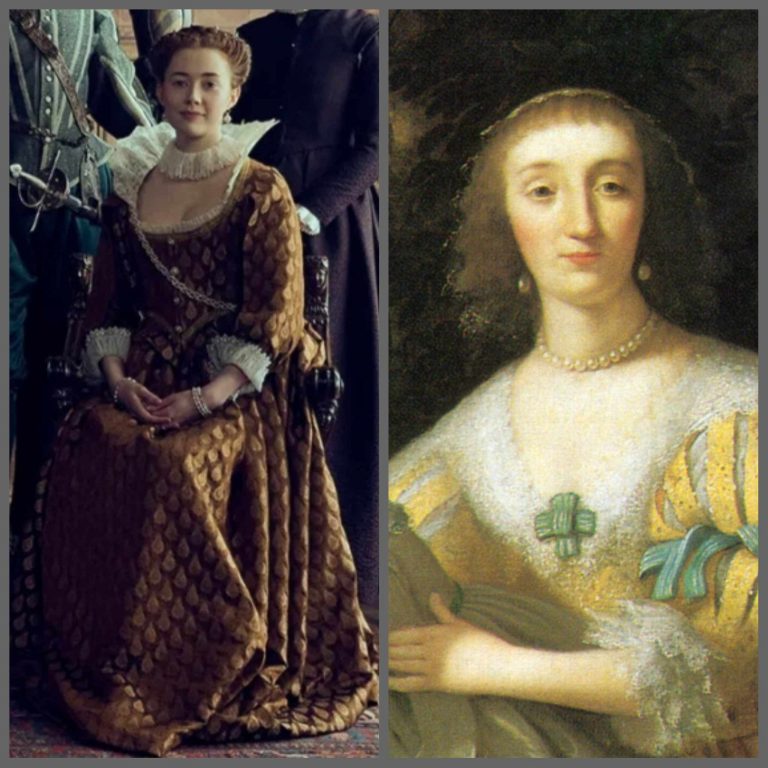
But Mary wasn’t dissuaded. George was going to marry Katherine and Mary was going to make it happen. In a clever if not manipulative and scandalous stroke, Mary invited Katherine to one of her houses for a late dinner. Having contrived to get her to stay the night, George then appeared “unexpectedly”. They spent the night under the same roof with only Mary as a chaperone. Regardless of what they may or may not have done together, the implication was enough to ruin Katherine. The following morning, Rutland faced the unenviable decision of accepting his daughter back in disgrace or allowing the marriage with George Villiers.
A few weeks later, in May 1620, Katherine and George were married. Although he had initially barred the marriage, George’s royal lover now embraced Katherine as one of his own family. As Mary was like a mother to him, Katherine was like a daughter. And though she was to be George’s most loyal companion, the king never considered her a rival for George’s affection and passions. It was no doubt reassuring when George used his influx of wealth from the marriage to buy and renovate an estate which had once been his and James’ secret romantic getaway, and now would be again.
Despite his relationship with the king, and at least one affair with another woman (more on that later) Katherine and George would go on to have four children together; Mary, Charles, George, and Francis. The four would be raised in the royal nursery alongside the royal family and the families would be almost indistinguishable from each other in the turbulent years that followed James’ reign. But whatever their feelings toward each other, the marriage had done exactly what Mary had planned; the Villiers line was secure through a legitimate heir. The legacy would continue.
Coming Soon: Part II! Featuring the King’s son, George’s other affairs, and of course the mystery and suspicion surrounding the King’s death.
If you’re interested in reading more, check out The King’s Assassin by Benjamin Woolley. Purchasing through this affiliate link helps to support this site.
In the meantime, as ever you can come and find me for more behind the scenes and other weird historical tidbits at my Patreon.




